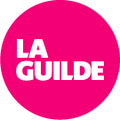May 19 to July 3, 2022
Curator: Michael Patten
Margaret August
Beau Dick
Allen James
Gigaemi Kukwits
Since time immemorial, Indigenous peoples have preserved biodiversity in the face of continued human population growth. Shortly after the time of first contact with Europeans, Indigenous communities were stripped of their ancestral lands; the Land Back movement aims to restore governance and stewardship of the territory for a sustainable future.
If Land Back is a call to action, a return of equity to a stolen territory, it also allows for some questioning. How can we best protect biodiversity, land and water? The first step would be to return the land to its traditional and legitimate protectors. The revalorization of Indigenous knowledge goes beyond symbolic gestures of recognition or inclusion; it aims to significantly change practices and structures.
The Northwest Coast, the cultural zone of many of Canada's Indigenous nations, geographically follows the northwest coast of North America and extends inland along the Nass and Skeena Rivers and the Fraser River. The potlatch ceremony is an integral part of the governance, culture and spiritual traditions of many of these nations. It has many variations, but is usually used to mark important social events. The potlatch usually takes the form of a gift-giving ceremony and redistribution of wealth, and may include feasting, spiritual dancing and singing.1 The potlatch was banned by the Canadian government from 1884 to 1951. This sanction led to the confiscation of many sacred objects and the arrest of many community members. More broadly, it is a large scar in the history and culture of these peoples. While this practice was once banned, it is now encouraged and celebrated throughout the Indigenous art and cultural world of the Northwest Coast.
Thanks to the generosity of Ceremonial / Art Gallery and Fazakas Gallery located in Vancouver, BACA is fortunate to present an important part of their collections of Indigenous artworks from the Northwest. Among the artists represented are the sculptural work of contemporary artist Kwakwaka'wakw Cole Speck as well as that of his late master Chief Beau Dick, a recognized activist in the Idle No More movement. Speck, through his work, attempts to convey a strong love and respect for his cultural and artistic family roots. At the same time, he offers a contemporary style and message specific to his practice, as in the case of his work Beaver in a Hudson's Bay Bag (2019), a playful and critical nod to the history of the Hudson's Bay Company's territorial and commercial monopoly.
We hope that this window on the Indigenous art of Western Canada will amaze you and pique your curiosity.
We recognize that BACA is taking place on unceded Indigenous lands, and that the Kanien’kehá:ka Nation is the caretaker of the lands and waters on which we gather today. Tiohtiá:ke (Montreal) is historically known as a gathering place for many First Nations. Today, it is home to a varied population of Indigenous and other peoples. BACA acknowledges the continued relations with the past, present, and future in their current relationships with Indigenous and other peoples within the Montreal community.
The Biennale d’art contemporain autochtone (BACA) thanks the Canada Council for the Arts, the Government of Quebec (Conseil des arts et des lettres du Québec, Fonds d'investissement pour le rayonnement de la Métropole), Tourisme Montréal, the Conseil des arts de Montréal, La Guilde and its other presenting partners.
1 René R. Gadacz, « Potlatch », The Canadian Encyclopedia, Last update October, 24, 2019.







